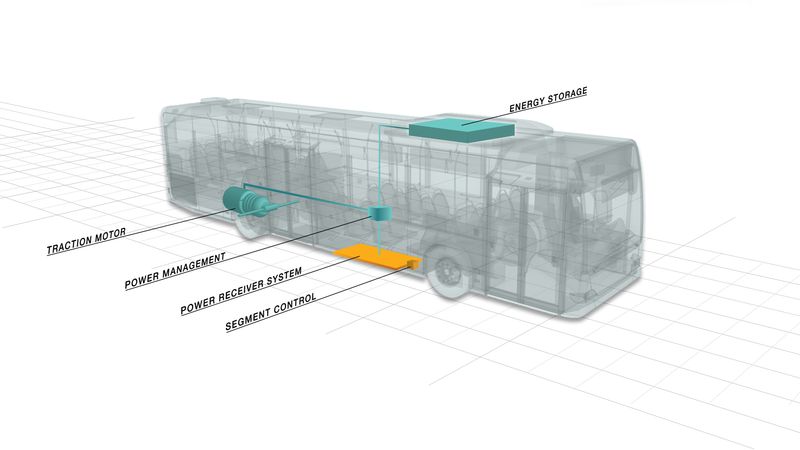"Tom Lombardo posted on March 18, 2013
Many years ago I bought a rechargeable battery-operated toothbrush with its own charging cradle. I noticed that there were no electrodes on the toothbrush or the cradle, and for a moment I wondered how it charged through the plastic. In a flash of inductive reasoning (sorry - I couldn't resist) I realized that the charging cradle and the toothbrush must be magnetically coupled. (This was long before iPhone charging pads.)
Image: PRIMOVE
The same principle is now being applied to electric vehicles (EVs). Not only can you buy an EV charging pad for your garage, mass transit systems in some municipalities are experimenting with under-the-road charging pads at bus stops, allowing a bus to top off its charge with each stop. Since modern rechargeable batteries don't suffer from the "memory effect" but they can be damaged by deep discharge cycles, topping off the batteries during brief stops makes a lot of sense. Let's look at two examples of this technology.
Aggie Bus photos courtesy of Utah State University
The Wireless Power Transfer team at Utah State University (USU) designed the Aggie Bus and and its associated charging station, which transfers up to 25 kW of power with 90% efficiency.
USU's spin-off company, WAVE (Wireless Advanced Vehicle Electrification) will roll-out its first commercially-available version on the University of Utah's campus sometime in 2013. According to WAVE CEO Wesley Smith, “Current battery limitations prevent an all-electric transit bus from operating all day from an overnight charge. WAVE solves that problem by charging the bus wirelessly during its daily operations when the bus stops to load and off-load passengers. This technology makes electric buses competitive with their diesel hybrid and compressed natural gas counterparts.”
Without frequent charging an electric bus would need a battery large enough to store a full day of charge. That would be quite heavy, which means a lot of energy is used just to move the weight of the battery. The WAVE solution means the buses can have smaller and lighter batteries, making the bus use less energy overall.
Mannheim, Germany is piloting a similar technology using PRIMOVE buses. PRIMOVE technology can also used for small commercial vehicles and light rails.
Without frequent charging an electric bus would need a battery large enough to store a full day of charge. That would be quite heavy, which means a lot of energy is used just to move the weight of the battery. The WAVE solution means the buses can have smaller and lighter batteries, making the bus use less energy overall.
Mannheim, Germany is piloting a similar technology using PRIMOVE buses. PRIMOVE technology can also used for small commercial vehicles and light rails.
This video gives an overview of the PRIMOVE bus charging system:
"


Sem comentários:
Enviar um comentário